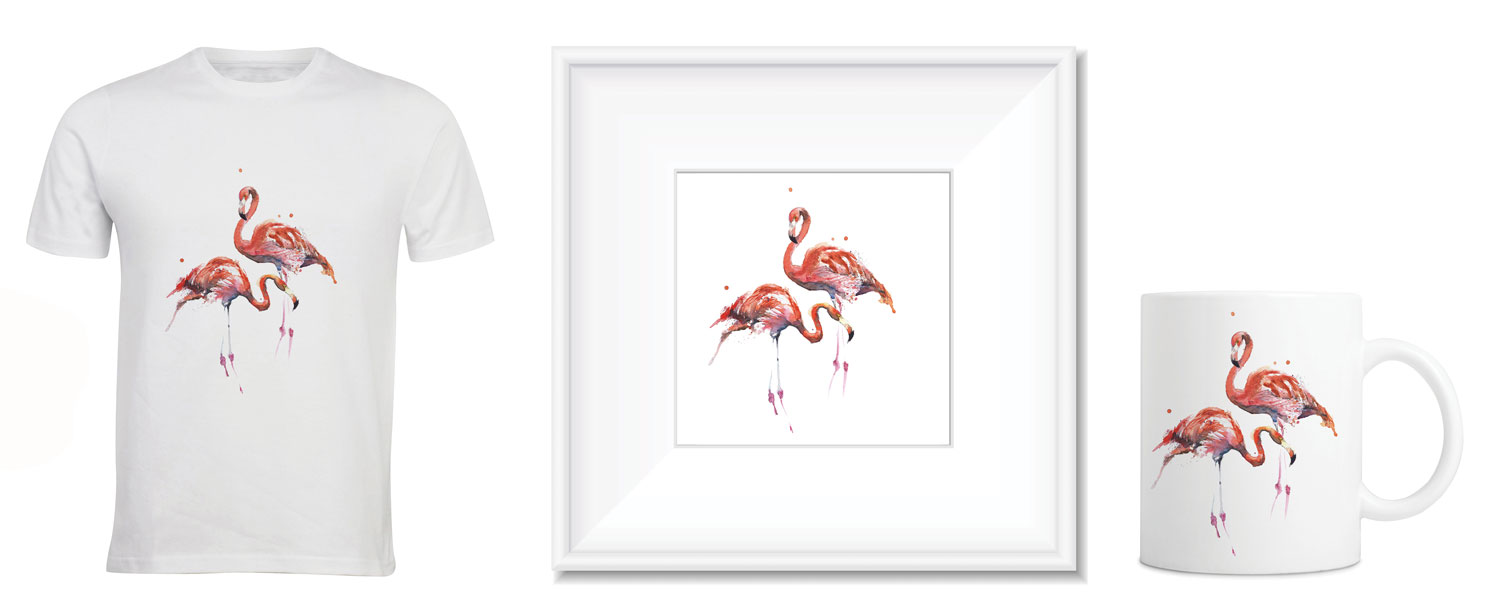Create additional income with your art
Licensing your art is an excellent way to develop a supplemental income stream. According to the Graphic Artists Guild, licensing is a $70 billion industry, and art licensing accounts for 10 percent of the licensing market. You can license your artwork to be reproduced on a wide range of products such as T-shirts, posters, jewelry, prints, household items, and fabrics. The following tips will not help you market you art but will help you determine how your license can protect your rights once you find the right deal.
The United States Copyright Act of 1976 recognized the principle of divisibility, which allows artists to use narrowly defined licenses to divide the rights to their copyrighted artworks. For example, artists can grant one company the right to reproduce a work of art on a T-shirt, grant another company the right to reproduce the artwork on a coffee mug, grant a third company the right to distribute it, and grant a museum the right to display the artwork. Each of these licensees would become the owner of a limited copyright in the artwork, and the artist would retain all other rights that he or she had not otherwise parceled out.
An exclusive license stipulates that the artist agrees not to convey to another party a right it has granted to one party; these exclusive licenses may have time-period limits. To be effective under the Copyright Act of 1976, an exclusive license must be in writing, and the writing must clearly define the key terms of the grant of license, including duration, royalty payments, and the name on the copyright notice.
The license agreement goes from the artist who holds the copyright (the licensor) to the user (licensee). The license grants the licensee the right to use the artwork on a product or for a specific purpose and for a set time period in exchange for some form of compensation and subject to such other terms and conditions upon which the parties agree. The compensation can be a flat fee, a percentage of the sales of the product (a royalty), a combination of a flat fee and a royalty, or a guaranteed minimum amount against the royalty.
The license agreement should include the exact names and addresses of the licensor and the licensee; describe the licensed artwork; include an attached image of the artwork, when available; and clearly describe the use that the licensee can make of the artwork. For example, the license should clearly state whether the licensee plans to reproduce the artwork on a T-shirt, a coffee mug, or another product.
The license may entitle the licensor to a specified number of free samples of the product using the artwork and specify that the samples are subject to the licensor’s approval before production begins. The licensee must agree to seek permission from the artist to make any additional use of the artwork that the license agreement does not cover, and the licensor and licensee must agree upon payments for such use at that time.
The license should stipulate the time period that the license will remain in effect, the date upon which the artist must deliver the artwork, and the manner of delivery. The licensor should stipulate whether it is granting an exclusive or a nonexclusive right to reproduce the artwork on the product. The license should state where the licensee can use or distribute the product containing the licensed artwork. The artist should reserve all rights that the license does not expressly grant to the licensee.
If the licensee is paying royalties, the license should specify whether there is a guaranteed minimum payment and how the percentage is calculated—on gross sales or net sales, for example. It should also state whether the licensor has a right to audit the books of the licensee and what procedures will take place if the licensor finds a discrepancy in the books and how often the licensee must render statements of account to the artist and how detailed those statements must be.
The license should stipulate whether the licensee has the right to change the artwork or combine it with other artworks and, if so, whether the licensee can do so without the approval of the licensor; specify whether the name of the artist will appear on the artwork when it is reproduced; and state whether a copyright notice in the name of the artist will accompany the artwork when it is reproduced.
If the artist is licensing electronic rights to the artwork, the license should specify the form of final use, such as a website or a compact disc, and indicate whether the consumer or end user can print a copy of the artwork or is limited to only viewing a display of the artwork.
The license should provide for indemnification of the licensor by the licensee against any and all claims, costs, and expenses, including attorneys’ fees, that arise in connection with any use of the artwork that differs from those that the license allows and from any claims relating to the product upon which the artwork has been reproduced, even if in full compliance with the terms of the license agreement. The licensee should agree to assume liability for loss, theft, or damage to the artwork.
Finally, the license should specify the manner in which disputes will be resolved—for example, whether the parties will submit to binding arbitration or are free to litigate. If the parties do not agree to binding arbitration, then the license should specify that the law of a particular state shall govern and the court that will have exclusive jurisdiction over the dispute.
While putting together a comprehensive license agreement with all these terms can be daunting, don’t let it deter you from licensing your art. Doing so offers you the opportunity to earn income multiple times from the same work of art, which is not the case if you sell the artwork outright.
Alan E. Katz is a partner in the New York City law firm Greenfield Stein & Senior, LLP, where he specializes in art law, real estate law, and software licensing.










NO COMMENT